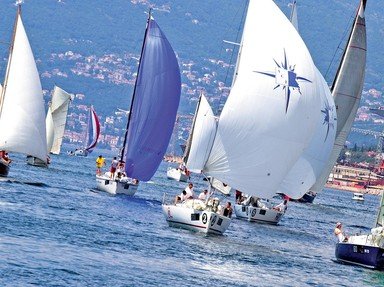Quiz Answer Key and Fun Facts
1. What is a neap tide?
2. What colour flag must be flown when first entering the territorial waters of another Country?
3. S.O.S. is the international morse code distress signal. It was first selected because it stands for "Save our Souls".
4. Which of the following is not a type of sail?
5. What shape are the top marks of Cardinal buoys indicating the direction of a safe water?
6. Powered vessels must always give way to vessels under sail.
7. The radio distress call, "Mayday", is derived from the internationally recognised importance of May 1st?
8. The ropes which pull sails from side to side, or alter their angle to the boat are called?
9. While sailing at night and still some distance from land, although you cannot yet see the lighthouse, you see its beam sweeping across the sky from the horizon ahead. This beam is called what?
10. Under the Beaufort scale of windforce, a "gale" is what strength?
11. Fore & aft rigged sailing vessels usually have a short rope between the boom and deck which prevents the boom from rising too much. This rope is called a kicking strap. What is another name for the kicking strap?
12. Which of the following is not a type of anchor?
13. One of the World's most famous and hotly contested yacht races is the America's Cup. Which Nation won the race in 2003?
14. What are "warps & springs" used for?
15. Which of these knots is not commonly used in sailing?
Source: Author
picqero
This quiz was reviewed by FunTrivia editor
Nightmare before going online.
Any errors found in FunTrivia content are routinely corrected through our feedback system.

